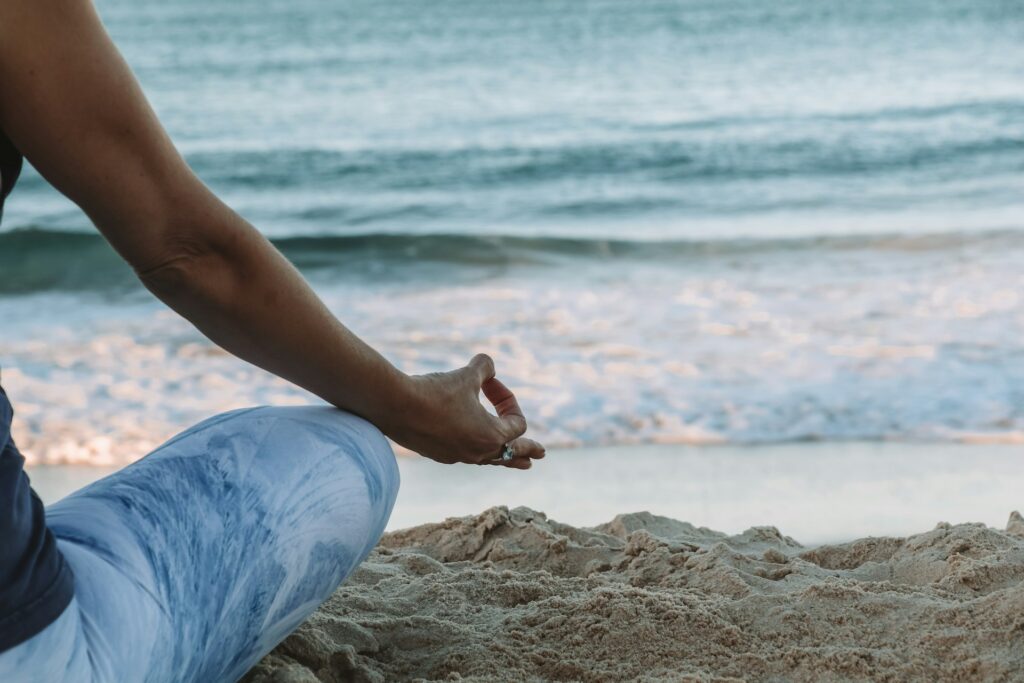Our bodies are incredibly sensitive to environmental cues when it comes to sleep. Temperature fluctuations, subtle noises, and even the faintest light can disrupt our natural sleep cycles. Our ancestors slept in sync with natural rhythms of light and dark, but our modern bedrooms often work against these biological signals.
“We’ve created sleep environments that fight our biology rather than support it,” says sleep researcher Dr. Rebecca Robbins of Harvard Medical School. “Making mindful adjustments to our sleep spaces can help realign our sleep with our natural circadian rhythms.”
Temperature: The Overlooked Sleep Factor
Did you know that your body temperature naturally drops as you fall asleep? This is why finding the right bedroom temperature is crucial for quality rest.
Try this: Set your thermostat between 65-68°F (18-20°C) for optimal sleep conditions. Studies show this temperature range promotes deeper sleep by supporting your body’s natural nighttime temperature drop.
Too warm? Consider investing in cooling sheets made from natural fibers like bamboo or linen. These materials wick away moisture and heat, helping regulate your body temperature throughout the night.
If you share your bed with a partner who prefers different temperatures, dual-zone bedding or separate blankets can be a relationship-saving solution.
Light Management: Creating Darkness in a Bright World
Even minimal light exposure can suppress melatonin, the hormone that regulates sleep. Those seemingly harmless LED indicators on electronics and street lights filtering through curtains can significantly impact your sleep quality.
Simple fixes include:
- Blackout curtains or blinds that truly block all outside light
- Removing or covering electronic lights in your bedroom
- Using dim, warm lighting in the hours before bed
- Keeping your phone face-down or, better yet, outside your bedroom
“Light is the most powerful cue for shifting our circadian rhythms,” notes Dr. Charles Czeisler of Brigham and Women’s Hospital. “Controlling your light environment is one of the most effective ways to improve sleep.”
Sound Engineering: Creating Your Perfect Sleep Soundscape
Your ears never fully “turn off,” even when you’re asleep. This evolutionary feature helped our ancestors stay alert to potential dangers, but in our modern world, it means ambient noises can fragment your sleep without fully waking you.
Consider these sound strategies:
- White noise machines to mask disruptive sounds
- Smart earplugs that block unwanted noise while still allowing alarm sounds through
- Acoustic panels for rooms with echo problems
- Weatherstripping windows and doors to block outside noise
If complete silence feels uncomfortable, nature sounds like gentle rain or ocean waves can provide consistent, soothing background noise that won’t trigger your brain’s alertness response.
Air Quality: The Sleep Factor You’re Breathing
We spend roughly a third of our lives in our bedrooms, yet many of us overlook the quality of the air we breathe while sleeping. Poor air quality can lead to congestion, allergies, and subtle sleep disruptions.
Air quality improvements:
- Regular vacuuming with a HEPA filter vacuum
- Washing bedding weekly in hot water
- Using hypoallergenic pillow and mattress covers
- Adding bedroom-friendly plants like snake plants or peace lilies
- Keeping humidity between 30-50% with a humidifier or dehumidifier
“Many people don’t realize they have minor allergic reactions during sleep that never fully wake them but significantly reduce sleep quality,” explains allergist Dr. Purvi Parikh. “Creating an allergen-free sleep zone can make a tremendous difference.”
Bedding: Your Personal Sleep Cocoon
Your mattress, pillows, and bedding aren’t just comfort items—they’re sleep tools that should be selected with intention.
Finding your perfect fit:
- Replace mattresses every 7-10 years, sooner if you notice sagging
- Choose pillows based on your primary sleep position (side sleepers need firmer, thicker pillows than back sleepers)
- Consider weighted blankets (around 10% of your body weight) for anxiety-disrupted sleep
- Invest in natural fiber sheets that breathe and manage temperature
Remember that the “best” mattress isn’t universal—it depends on your body type, sleep position, and personal preference. What works for a friend might not work for you.
Electronic Distancing: Creating a Tech Boundary
The blue light from screens is just one part of the problem. The content we consume—whether it’s work emails, news, or social media—can trigger stress responses that make falling asleep nearly impossible.
Creating healthy tech boundaries:
- Establish a device curfew 30-60 minutes before bedtime
- Create a charging station outside your bedroom
- Replace pre-bed scrolling with reading physical books or journaling
- Use “night mode” settings when you must use devices in the evening
Aromatherapy: Scents for Sleep
Our sense of smell is directly connected to the limbic system, the part of our brain that controls emotions and memory. This makes certain scents powerful tools for signaling sleep time to your brain.
Sleep-promoting scents:
- Lavender has been shown in multiple studies to reduce anxiety and improve sleep quality
- Chamomile can help reduce stress and promote relaxation
- Cedarwood may increase serotonin production, which converts to melatonin
- Vanilla has been found to reduce startle responses and promote calm
A simple diffuser with a few drops of essential oil, used 30 minutes before bed, can help create a consistent sleep cue for your brain.
Decluttering: The Psychological Impact on Sleep
A cluttered bedroom creates subliminal stress. When our sleep environment is chaotic, our minds have a harder time winding down.
Decluttering strategies:
- Keep work materials out of the bedroom entirely
- Use under-bed storage for items you need but don’t need to see
- Establish a “clear surface” rule for nightstands and dressers
- Create simple organizational systems that are easy to maintain
“Our physical environments reflect and affect our mental state,” says environmental psychologist Dr. Sally Augustin. “A calm, organized bedroom signals to your brain that it’s safe to relax and let go of the day’s stresses.”
Color Psychology: Paint Your Way to Better Sleep
The colors we surround ourselves with can subtly influence our mood and stress levels. While personal preference matters, some colors are generally more conducive to sleep than others.
Sleep-friendly colors:
- Blues and greens can lower heart rate and reduce blood pressure
- Soft neutrals like gentle grays and tans create a sense of calm
- Muted purples, particularly lavender shades, can promote relaxation
Avoid bright reds, oranges, and yellows in bedroom décor, as these energizing colors can subtly hinder your transition to sleep.
Creating Consistent Sleep Cues
Perhaps the most powerful change you can make to your sleep environment is establishing consistent cues that signal to your brain that it’s time to wind down.
Consistent sleep triggers:
- A specific scent used only at bedtime
- Dim lighting activated at the same time each evening
- A brief relaxation ritual in the same spot each night
- Bedroom-only pajamas that aren’t worn for lounging
These environmental cues become powerfully associated with sleep over time, helping your brain transition more quickly from wakefulness to drowsiness.
Making Gradual Changes
You don’t need to overhaul your entire bedroom at once. Start with the environmental factors that seem most disruptive to your particular sleep challenges.
Having trouble falling asleep? Focus first on light management and electronic boundaries.
Waking frequently? Temperature regulation and sound control might be your priority.
Waking unrefreshed? Look at air quality and bedding improvements.
Your sleep environment isn’t just the place where you sleep—it’s an active participant in your sleep quality. By making thoughtful adjustments to align your bedroom with your biology, you can transform restless nights into restorative sleep.
Remember that the best sleep environment is personal. Pay attention to how different changes affect your sleep quality, and don’t be afraid to experiment until you find what works best for you.

Disclaimer: This article is intended for general informational purposes only and does not constitute medical advice. The content should not be used during a medical emergency or for the diagnosis or treatment of any medical condition. Please consult with a qualified healthcare professional regarding any sleep concerns or before making significant changes to your health routines, particularly if you have existing health conditions.



